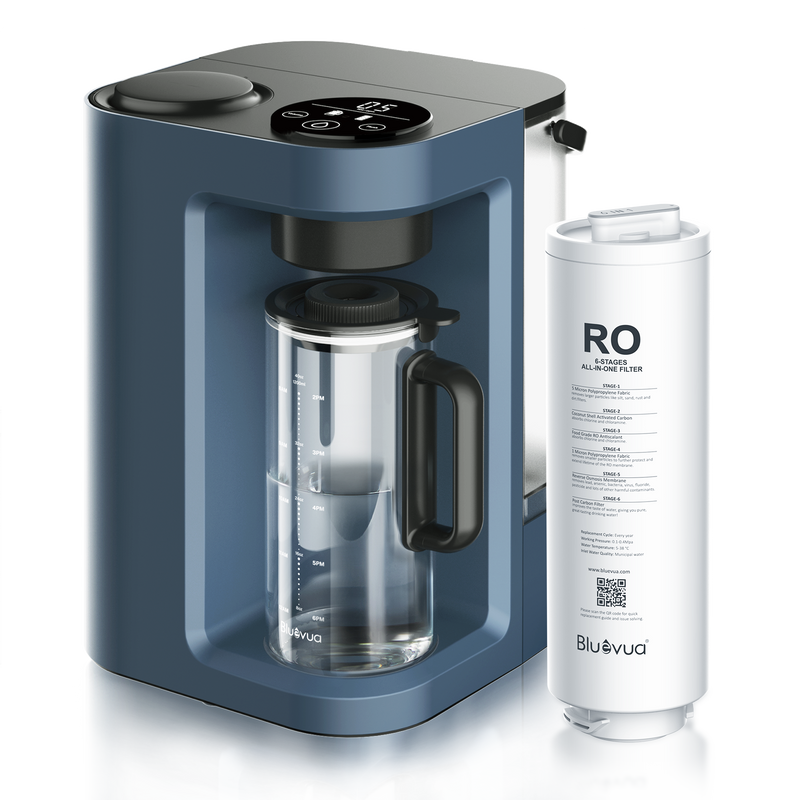Unlock Pure Perfection: Discover the Secrets of Desktop Reverse Osmosis Water Systems!
In a world where clean drinking water is essential for our health and well-being, desktop reverse osmosis (RO) water systems are becoming increasingly popular among households and offices alike. These compact devices provide a convenient solution for anyone seeking to enhance the quality of their drinking water. As urbanization and pollution continue to threaten water sources, the importance of having access to purified water cannot be overstated. Desktop RO systems utilize advanced filtration technology to remove impurities and contaminants, ensuring that you have pure, safe water at your fingertips. In this article, we will explore how these systems work, the benefits they offer, and what to consider when choosing the right one for your needs.

Understanding Reverse Osmosis Technology
At its core, reverse osmosis is a scientific process that involves the movement of water molecules through a semi-permeable membrane. This membrane allows only water molecules to pass through while blocking larger molecules such as salts, minerals, and contaminants. The process begins when water is forced through the membrane under pressure. As the water passes through, impurities are left behind, resulting in purified water on one side and waste on the other. This method effectively removes a wide range of contaminants, including bacteria, viruses, heavy metals, and chlorine, making it one of the most efficient water purification technologies available. I remember when my friend first installed a desktop RO system in her kitchen; the difference in taste was immediate. She shared how the system not only improved the flavor of her drinking water but also allowed her to reduce her reliance on bottled water, which was a win for both her health and the environment.
Benefits of Desktop Reverse Osmosis Water Systems
The advantages of using a desktop reverse osmosis water system are manifold. Firstly, the improved water quality is undeniable. By effectively removing contaminants, these systems provide cleaner, better-tasting water, which is essential for cooking, drinking, and even making coffee or tea. Secondly, convenience plays a significant role. Unlike traditional filters that may require time to purify water, desktop RO systems deliver instant access to clean water whenever you need it. Additionally, they are often more cost-effective in the long run compared to purchasing bottled water. Investing in a desktop RO system not only saves money but also reduces plastic waste, aligning with eco-friendly practices. Many people, like my friend, have found that switching to a desktop RO system has transformed their hydration habits and positively impacted their overall health.
How to Choose the Right Desktop RO System
When selecting a desktop reverse osmosis water system, several factors should be considered to ensure you choose the right one for your needs. First and foremost, consider the filtration capacity. Depending on your household or office size, you will want a system that can produce enough purified water to meet your demands. Next, evaluate the maintenance requirements; some systems may require more frequent filter replacements than others, which can affect the long-term costs. It's also crucial to look for user-friendly features such as easy filter replacement, a clear display for water quality indicators, and compact design that fits your space. Additionally, pay attention to the certification of the system, as reputable certifications can assure you of its effectiveness. A friend of mine recently chose a system with a built-in TDS meter, which allows her to monitor the water quality in real-time, giving her peace of mind about the water she consumes.
Maintenance and Care for Optimal Performance
To ensure your desktop reverse osmosis system continues to function optimally, regular maintenance is essential. This includes timely filter replacements as recommended by the manufacturer, which is typically every 6 to 12 months, depending on usage. Regular cleaning of the system, including disinfecting the water storage tank, will also help maintain water quality. Additionally, it's a good practice to check the system for any leaks or malfunctions periodically. By following these maintenance tips, you can enjoy the benefits of purified water without any interruptions. My friend has made it a routine to check her system every few months, and she swears by the quality of water it produces; she rarely has to worry about contaminants.
Making the Right Choice for Your Hydration
Desktop reverse osmosis water systems are an excellent investment for anyone looking to improve their drinking water quality. With their advanced filtration technology, they provide safe, clean, and great-tasting water right at your fingertips. From the convenience of having instant access to pure water to the long-term cost savings compared to bottled water, the benefits are clear. By understanding how these systems work and taking the time to choose the right one for your needs, you can ensure that you and your family have access to the best hydration possible. Consider integrating a desktop RO system into your lifestyle and experience the difference it can make for your health and environment.
